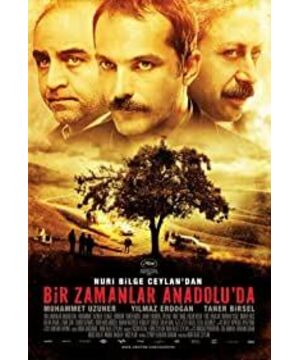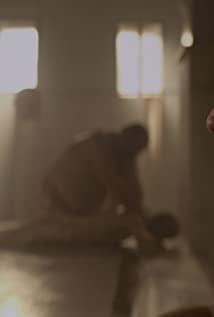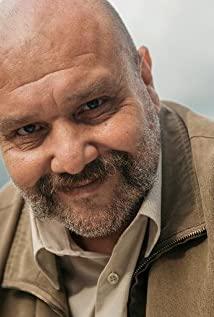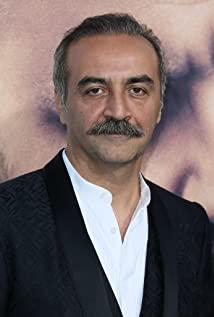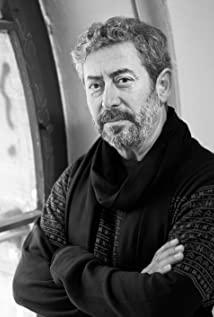A group of police took two suspected murderers and searched for the victim's body on the plateau of Asia Minor. This group of police includes forensic doctors, prosecutors, sheriffs, and other police officers. The story happened in 24 hours. In the beginning, two police cars ran on the Antorian plateau at night, and the second car lights shone on the desolate wilderness. The two suspects are tall and thin, and the other is short and fat. They are cousins. They asked the tall and thin suspect to identify the scene, but stopped and searched several times without finding the body. Finally, the angry police chief beat the tall and thin suspect. In the middle of the night, they went to a nearby village for dinner and rest, and the local village chief received them. The suspect identified the body the next day. Then the police took the body back to the police station, and the forensic examiner dissected the body.
Although it is a story about solving the case, the director does not seem to pay much attention to the case itself. Moreover, the case itself is complicated and confusing, and the audience may not be able to figure out who the murderer is and what the motive was for the murder. The director seems to have intentionally left many possibilities. However, during the 24 hours of solving the case, a lot of information was revealed in the chat and interaction of this group of police officers. It even captures the real real life in Turkey, the people, their spirits and hearts in it all at once. The forensic doctor seems to be a relatively detached role. He observes the words and actions of everyone in the whole process with a calm attitude. He has a kind of compassionate warmth. He seems to represent the product of modern Turkish education and modern civilization. The chief prosecutor is a high-ranking role, has received modern education, and strictly implements modern legal procedures, but he is a bit different from forensic doctors. Forensic doctors are professionals, and the chief prosecutor is a powerful person. They all represent the relatively enlightened elite in Turkey. The chief prosecutor said goodbye to the bizarre death of his wife who was a forensic doctor. She was also educated. When she learned about her husband's derailment, she predicted that she would die after giving birth to a child. It turned out to be the case. The forensic doctor told the chief prosecutor that it is impossible for a person to die if he wanted to. She may have taken drugs that caused a heart attack and committed suicide. In contrast, the sheriff is a rude person, a basic-level official. He complained to his superiors, but he still respected them on the surface. His superiors' prosecutors obviously didn't think highly of his work ability and didn't believe that he could find the corpse, and he vented his anger that he could not find the corpse on the suspect. He has a child who needs long-term medication, and his wife urges him to buy medicine for the child and go home early. The driver also has a lot of complaints about how colleagues covet their bosses and pay more for overtime work. The words of the village chief show the governance style of the grassroots society and the relationship between the grassroots and the power elite.
Many comments think that it is enough to show the face of Turkish society through this process of finding the dead body. As for who the murderer is, it is not what the movie cares about. But I think that although the film does not provide evidence of who the murderer is, it can be interpreted by the audience, but it also provides a lot of corresponding clues. If you leave the questioning of the truth of the case, the whole story will no longer have suspense, so The analysis of these truths is still very important.
So who is the murderer? What was the motive for killing again?
The main suspect in the movie is a thin and tall man, but when the body is found, the short and fat man murmured that I killed him. But the tall and thin guy immediately stopped him with his eyes and told him not to talk nonsense. From the outside, he was thin and tall with a sharp vision and was a clever and will-powered figure, while the short and fat man was a cowardly guy. So the chunky guy may be telling the truth. Being thin and tall is a crime for short and fat people.
When the village chief’s daughter appeared with an oil lamp in the darkness of the blackout, everyone present was shocked by her beauty. There are two details here. The chunky suspect seems to be familiar with the village chief’s daughter. The humpty suspect asked for Coke, the village chief’s daughter gave him Coke, and everyone else was coffee. But the tall and thin person had hallucinations that the victim was drinking coffee there, and then he looked like he was strangling his throat in pain. These two details indicate that the murder was likely to occur in the village chief’s house.
The place where the body was buried was not far from the village chief’s house, but far from the town center, and the auto repair shop opened by the victim was in the town center. Why should the body be buried so far away? In addition, the suspects quickly found the corpse after coming out of the village chief's house, but when they came from the town, they looked for it and couldn't find it. This also seems to indicate that the body was transported from the village chief's house.
There is another detail. When they were going to the village chief’s house, the driver objected, and it is said that his wife was from the village. Why does he object? Does he actually know the truth?
In the village chief’s home, the police chief got a criminal motive when he tried the thin and tall man. That is, the tall and thin man had an affair with the victim's wife, and the victim's son was actually a tall and thin son. And that night, he was drunk, missed his mouth, and told the victim the truth. This was his motive for killing. Part of this statement should be credible. The way he looked sad when the victim's son threw a stone at him shows that this is really his son. The victim's wife did not feel sad when claiming the corpse, but seemed to have a sense of relief.
I have a guess that both the chunky suspect and the victim fell in love with the village chief’s daughter, and the chunky man killed the victim because of the jealousy. The tall and thin person may not have seen the village chief's daughter before, so he will be shocked by her beauty. He said that he was drunk and missed his mouth, perhaps just to make his killing appear more real.
There are still many doubts in this speculation that cannot be explained. The main reason is that I don't know much about many behaviors in Islam. But I firmly believe that there should be a good explanation.
2012.2.23
View more about Once Upon a Time in Anatolia reviews


